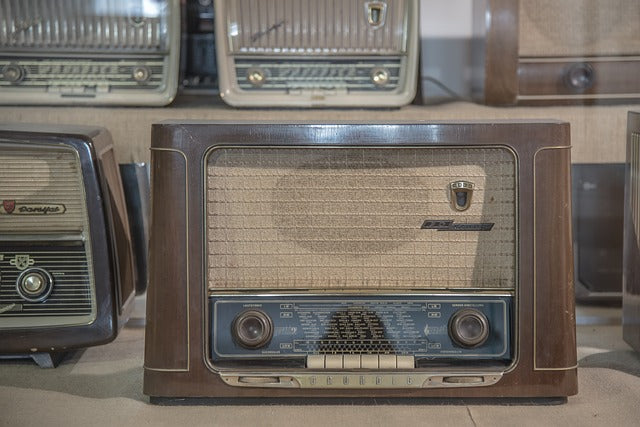"It was a beauty of a system, and the envy of my friends—especially David, who coveted that stereo. I’d built it myself from scratch, from pieces discarded from my father’s do-it-yourself hi-fi. It was my magnum opus: a single cabinet that stood about four feet tall, and 20 inches wide and deep. On top was mounted a turntable I’d lovingly resurrected from Dad’s junk pile, and below that was an old Fisher 500 receiver. Its scratched, gold-painted faceplate was peeling, and the tuner didn’t work (though the dial lit up), but miraculously, the phono amplifier sounded fine after I replaced the tubes. Farther down the plywood tower was the best part, hidden by a grille cloth cut from an old set of yellow curtains Mom had retired: an 8-inch woofer with a whizzer cone. A woofer is the drive-unit that makes bass and, in this case, midrange sounds as well; the whizzer cone—a small, funnel-shaped paper add-on to the center of the woofer—helped reproduce the higher frequencies, such as those produced by snare drums and cymbals. I’d found the speaker in dad’s shop. Although its paper cone had a large rip in it and the whizzer needed repair, some rubber cement and patience put that beauty back together again."The benefits of a single driver system are its lack of a frequency dividing crossover network and different types of drivers for each frequency range. The downsides include doppler and intermodulation distortion, beaming. On the flipside, the benefits of a multi-driver system are the elimination of the former system's distortion issues at the expense of driver differences, phase issues, frequency overlap, and time alignment. At the end of the proverbial day, I would have to say fiction since the problems associated with woofers trying to play the role of tweeters overwhelm the most fixable difficulties of crossover designs. and… I am getting closer to actually publishing my memoir—two years in the making—which has now turned out to be nearly 500 pages! It's called 99% True and is chock full of adventures, debauchery, struggles, heartwarming stories, triumphs and failures, great belly laughs, and a peek inside the high-end audio industry you've never known before. When it launches I plan a few surprises for early adopters, so go here to add your name to the list of interested readers. There's an entire gallery of never before seen photos of people you know but haven't seen like this.
Single driver speakers are better than multi-driver designs
by Paul McGowan
Fact or fiction? There are so many ifs to consider it's hard to give a good answer but let's first examine what this all means.
For many years of early hifi development, single driver loudspeakers ruled. My first hifi system was a single driver setup that I describe here from my upcoming memoir 99% True:
- Choosing a selection results in a full page refresh.
- Opens in a new window.








